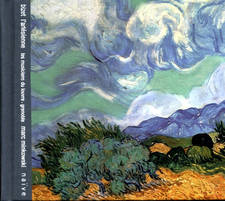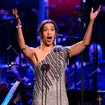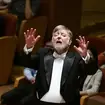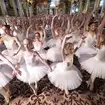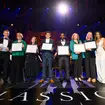10 of the best Classical era composers
25 November 2020, 15:36 | Updated: 14 July 2023, 13:00
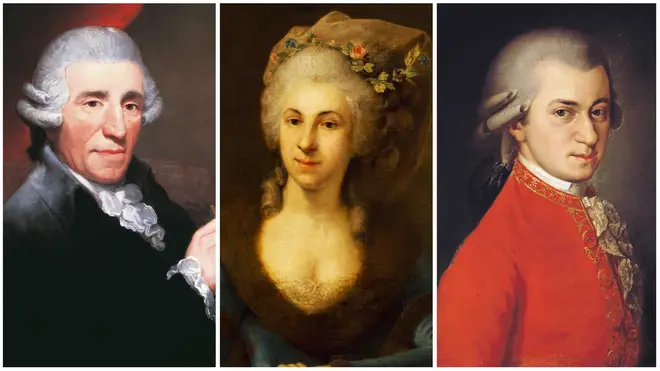
We all know ‘classical music’ – music that’s distinct from pop, rock or jazz. But what of the Classical era? From Mozart to Beethoven, we explore the greatest composers active in the second half of the 18th century.
The Classical era was a time for championing the symphony, composing comic operas, and developing the piano sonata.
It refers to the period in Western Classical Music from around 1750 to 1820 and is largely dominated in our history books by composing heavyweights, Haydn, Mozart and Beethoven.
But what of the other contributors to this time of revolution – of the industrial and symphonic variety – and musical elegance? Here’s a rundown of the Classical composers you should know about.
Read more: 30 of the greatest classical music composers of all time
-
Carl Phillip Emanuel Bach (1714-1788)
CPE Bach was the second surviving son of Johann Sebastian Bach, the patriarch of Western music’s unstoppable dynasty.
Frustrated by the old Baroque restraints, CPE carved out his own sound, noted for its quick changes in mood, harmony and dynamic shade. Hear it prominently in the second movement of his Keyboard Concerto in G major, whose minor-key orchestral opening is suddenly penetrated by a solo harpsichord or piano line, which unexpectedly flips to major tonality slap bang in the middle of a phrase.

CPE Bach Keyboard Concerto in G-major Wq 4 2nd mvt
-
Christoph Willibald Gluck (1714-1787)
Gluck blazed the trail for 19th-century opera. Frustrated by Baroque opera, its lengthy moments of vocal indulgence and lean plot lines, Gluck wanted to compose arias that would enhance the plot or title character.
Here was a composer who wanted drama to lead, and music to follow. Mind you, the absolutely wonderful ‘Mélodie’ or ‘Dance of the Blessed Spirits’ – arranged below for solo piano – from his best-known opera Orfeo ed Euridice, is anything but a side-show.

Yuja Wang plays Mélodie de Gluck/Orfeo ed Euridice
-
Franz Joseph Haydn (1732-1809)
The Classical era was dominated by Haydn and Mozart, who both worked in Vienna, the older (Haydn) for a while teaching the younger (Mozart).
Haydn wrote fantastic operas, masses, piano music and string quartets, but the symphonies – at least 104, in total – were his greatest achievement.
Those he wrote during the early 1770s are often described with the label ‘Sturm und Drang’ (‘Storm and Stress’), a form of heightened emotionalism and bold individualism uncommon at the time, that piqued the interest of music lovers throughout Austria and abroad.
Read more: We made this guy listen to all 104 Haydn symphonies and put them in order of greatness >

Haydn: Symphony No. 101 “The Clock” / Antonini · Berliner Philharmoniker
-
Luigi Boccherini (1743-1805)
Italian and Spanish composer, Luigi Boccherini, was considered one of Europe’s greatest cellists, and a champion for the dignified instrument.
His string quartets usually take the form of Haydn’s, of whom Boccherini was a great admirer. But Boccherini is often credited with improving Haydn’s model by shining a brighter light on the cello and giving it more than an accompanying role.
We remember the composer today for the earwormy ‘Minuet’ from his String Quintet in E, as well as his Cello Concerto in C major.

Minuet (Boccherini) Wedding String Quartet
-
Marianna Martines (1744-1812)
Marianna Martines was one of the most accomplished composers and musicians of the 18th century, who also took keyboard lessons from none other than Joseph Haydn (that ‘Papa Haydn’ title was well-earned!).
She was a prolific composer of oratorios, masses, sacred choral works and secular cantatas, motets and arias, and orchestral works, among them her playful Ouverture in C major.
A single woman in Vienna, she shattered several glass ceilings in the Classical era, carving a career for herself in composing and teaching at home, and becoming the first woman ever to join the Accademia Filarmonica di Bologna, an esteemed society of musicians and composers.
Read more: 21 women composers you should know >

Marianna Martines (1744-1812) - Ouverture in C Major
-
Wolfgang Amadeus Mozart (1756-1791)
As far as we’re concerned, all things elegant in classical music – small ‘c’ and big ‘C’ – come back to Mozart.
It’s a difficult to think of a form Mozart didn’t explore. From his symphonies to his concertos, operas to sonatas, dances and string quartets, his unfinished Requiem to his almost improbable by-ear transcription of Allegri’s Miserere, Wolfgang Amadeus was one of the most prolific composers and gifted musicians in the history of music.
Enamoured with the city of Rome, Mozart began writing Italian operas, Don Giovanni and Così fan tutte. And it was with The Marriage of Figaro, considered by many to be the greatest opera ever written, that he revolutionised the Italian comic opera, somehow perfectly balancing a wild, fanciful plot alongside sublime melodies and musical logic.

Mozart’s ‘Lacrimosa’ on four theremins is hauntingly beautiful
-
Joseph Boulogne, Chevalier de Saint-Georges (1745-1799)
Joseph Boulogne, or the Chevalier de Saint-Georges, was an extraordinary composer dubbed by former US president John Adams as “the most accomplished man in Europe”.
Boulogne, born the son of a slave and white plantation owner, became a composer in the court of Marie Antoinette, teaching the Queen and writing numerous symphonies, sonatas, concertos, operas and string quartets. He was also a violin virtuoso, and stood at the helm of one of Europe’s great orchestras, Le Concert des Amateurs.
Unfortunately, a lot of the Chevalier’s music was lost during the French Revolution, and what survived was quickly forgotten. You can discover his music, including the best-known Violin Concerto No. 9, on Spotify here.
Read more: The life of Joseph Boulogne, Chevalier de Saint-Georges >

Joseph Bologne, Le Chevalier de Saint-Georges Violin Concertos
-
Gioachino Rossini (1792–1868)
Rossini was an Italian composer and champion of the bel canto style, that would fade in popularity towards the second half of the 19th century but was beloved in Rossini’s time.
The Barber of Seville, home to the wonderful ‘Figaro’ aria, is one of today’s most frequently performed operas of the bel canto era, a period – during which Donizetti and Bellini were also active – that bridged the gap between comic and Romantic opera.
When Rossini penned the overture to his opera William Tell, he was writing what would become one of the most recognisable and beloved melodies in classical music – and almost a cliché as the soundtrack for film scenes of galloping horses and car chases.

Overture to Gioachino Rossini's opera 'William Tell' performed entirely on blown bottles
-
Franz Schubert (1797-1828)
Schubert is celebrated as one of the four great pillars of 18th-century music, along with Mozart, Haydn and Beethoven, and a key figure in bridging the Classical and Romantic periods. Some believe his music stands perfect between the two eras, being Classical in form but Romantic in spirit.
He had a very short lifetime but left behind a vast musical offering, including seven complete symphonies, operas, piano and chamber music and some 600 lieder, or songs. During 1815 alone, when he was just 18, Schubert composed over 140 masterly song settings – including the unforgettable ‘Erlkonig’.
Read more: 10 best Romantic composers in classical music history >

Vilde Frang – Ernst: Grand Caprice (after Schubert's "Der Erlkönig")
-
Ludwig van Beethoven (1770-1827)
In the last years of the 18th century came Beethoven, who started writing music in the style inherited from Mozart and Haydn, and completely transformed it.
Moving into the 19th century, Beethoven’s music was getting increasingly ambitious in its use of melody, harmony and instrumentation. In 1804 he wrote his Third Symphony, known as the ‘Eroica’, which went on to redefine the symphony as a genre. 20 years later, his ‘Choral’ Symphony marked the first time a composer had used choral voices in a major symphony, paving the way for Romantic composers like Mahler and Berlioz.
Beethoven, arguably the defining figure in the history of Western music, split apart the Classical style at the seams, marking – with his nine symphonies, five piano concertos, one opera, and countless sonatas, string quartets and concertos – the dawn of the Romantic era.

Toddler is moved to tears hearing Beethoven's Moonlight Sonata for first time
